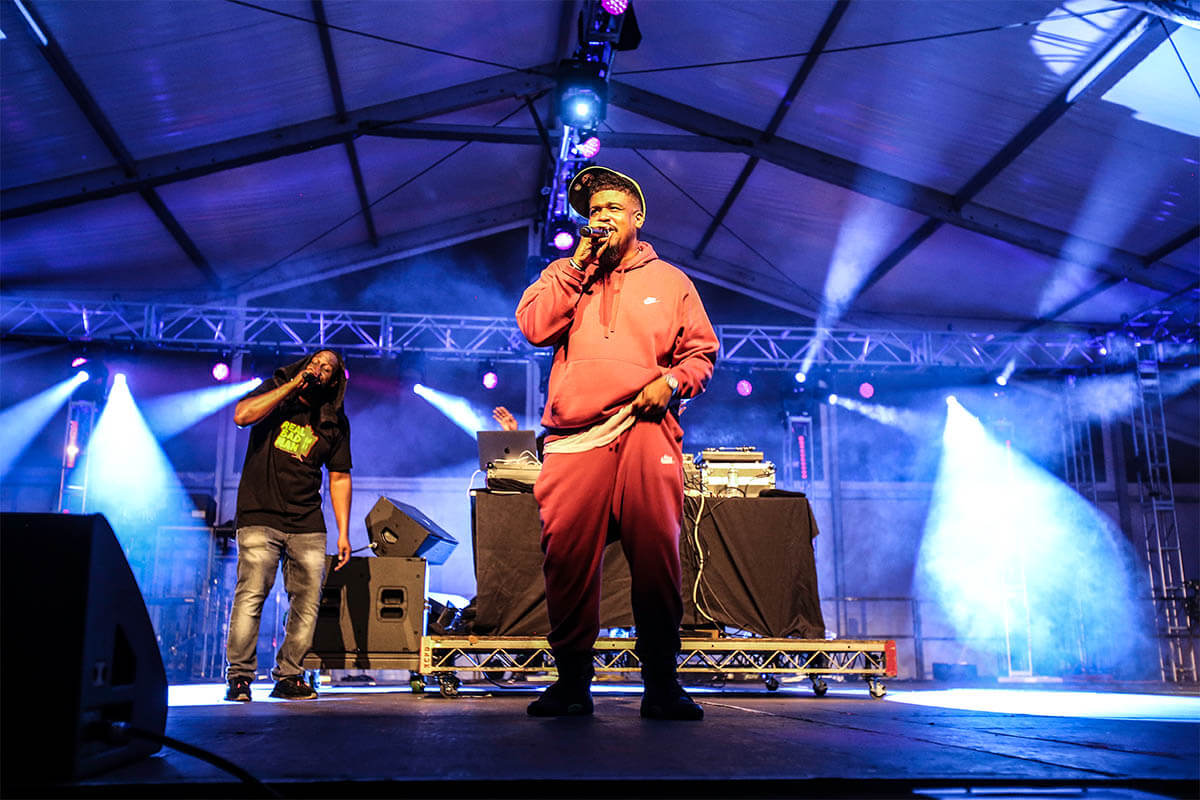From highway I-66 it may just look like a skate park, but the new $250 million addition to the Kennedy Center provides a unique and lively experience.
This addition to the Kennedy Center is called the Reach. Its name is an acronym for the words Renew, Experience, Activate, Create, and Honor which represent the many characteristics that the new addition tries to embody (REACH) since opening in September. During their first opening month, the Reach organizers hosted a series of festivals, one of those being the ‘Hip Hop Block Party’. The festival also highlighted De La Soul, a hip hop trio who originated in New York. The festival was truly an enjoyable testament to 90s rap and hip hop.
The REACH is separated into three different pavilions surrounded by green space outside the Kennedy Center. Within these pavilions, art galleries line the hallways separated by performing spaces. These galleries serve as an engaging change in media to observe between artists’ performances.
The green space has unique sculptures, most notably a recreation of the “Don’t let the pigeon…” pigeon, the main character in Mo Willems’ children’s books. To go with the festival organizers specifically featured a graffiti artist, Shiro One, who created a piece during the festival. Shiro One’s live graffiti performance gave the block party more dimension while also honoring 90s culture.
Moreover, the Kennedy Center’s goal is “to set the artist free. Free to reach beyond hallowed halls and sacred walls into creative open spaces where audiences can reach back and connect with the art and the artist who created it.” The Reach wants to extend this and does so successfully.
Within the pavilions, there are smaller rooms and stages that allow visitors to be face to face with an artist. This makes the artist feel more vulnerable and creates a deeper connection with the audience. Being upfront and easily able to see the actions of other artists allowed you to understand more of their role on stage, giving the audience a stronger comprehension of their work. The effect of this stylistic choice also raised the experience, as it allows people to learn more about the artists.
The Hip Hop Block Party attracts a community of people who all have an attachment to 90s hip hop, specifically De La Soul. My family and I had a long and touching discussion with a stranger. He had overheard my dad explain to my brother how DJs used to operate using records instead of a computer and listening to find the samples they want to use, a conversation that would’ve been rare to have elsewhere.
In addition, the selection of artists and their choice of performance accentuated the experience. One artist, The Large Professor, is a DJ and rapper from Harlem, New York. He produces music for many artists but most notably Nas and A Tribe Called Quest. His DJ performance was simply him listening for samples from other songs and marking records then mixing and playing them. Additionally, he accentuated the ambience with projections on the walls of run down parts of Detroit, shattered glass, and people dancing on repeat. This was amusing and allowed you to enjoy the music but also enjoy deciphering what was on the walls.
Another grouping of artists, DJ J. Period with female rapper Mumu Fresh performed a testament to female rappers of the 90s such as Lauryn Hill. Mumu Fresh performed “Doo Wop (That Thing)”, while changing the verses to her own lyrics and keeping the chorus. Everyone was singing along to the chorus but could listen to the verses to learn more about her, illustrating her creativity. J. Period’s mixing of several songs with a modern twist was a contrast to The Large Professor who uses a more traditional method.
Before the final performance other artists performing like DJ Beverly Bond that played songs like A Tribe Called Quest’s “Award Tour” and Outkast’s “Ms. Jackson.” Another artist, was very similar to Frank Ocean with softer hip hop beats and a more delicate voice. The diverse energy made the festival more fascinating. Whereas, Pharoahe Monch had a tougher beats with slight hints of rock.
All of these artists helped made the festival a better ode to 90s rap as a lot of them focused on either their older music or played songs from that time period. This really helped to fully immerse the audience into 90s hip hop culture.
While De La Soul set up, a comedian kept the crowd extremely entertained. He even made himself laugh when saying things such as, “I may have these Jordan sneakers but my bunion hurts.”
The comedian then brought out Q Tip one of the leading rappers of A Tribe Called Quest and the worked together to help kick off each other’s careers, to introduce De La Soul. However, Q Tip is featured on many songs by De La Soul, he did not perform or do any of his one liners in any of their songs much to the audience’s dismay.
Although, his absence did not take away from De La Soul’s performance. They had a relatively short performance but still were able to have an engaging and exciting performance. People of all ages were able to enjoy their show.
Overall, The Hip Hop Block Party was a great testament to 90s music and culture. Within high schoolers it seems to be underplayed and I believe students should therefore try to dive into and learn more about this genre. Along with the festival The Reach is an admirable extension of the Kennedy Center along with its mission to enrich audience connections with art.
Check out a playlist I made including artists at the festival or other 90s hip hop songs!
By Rose Boehm

































































